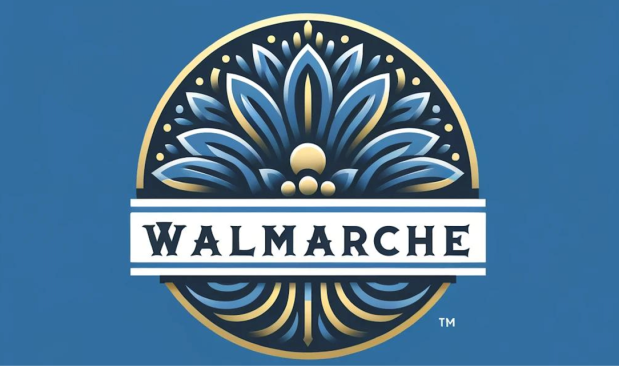Will Walmart’s ‘Walmarche’ Strategy Lure High-Income Shoppers?

Last Saturday (March 23), legendary fashion designer Diane Von Furstenberg made her exclusive collection of 200 clothing, baby and household items available for shoppers to buy at Target. DVF, who will celebrate the 50th anniversary of her iconic wrap dress this year, said her interest in the collaboration was to make her pieces more accessible to every woman.
Most items carry a price tag ranging from $5 to $50, even though some items sell for two to five times more. Fashion influencers helped drive awareness and demand at the launch.
The exclusive DVF collection is the latest in Target’s 25-year history of exclusive collaborations with celebrated designers, starting with Michael Graves in 1999. Target claims more than 175 such partnerships that give consumers affordable access to designer collections they can’t get anywhere else.
Target’s online and in-store shopper base is an attractive brand awareness, marketing and product distribution engine for designers such as Alexander McQueen, Lily Pulitzer, Missoni and Jason Wu, who usually only sell in higher-end retail outlets and their own D2C channels. For those who have been out of the designer fashion limelight for some time, it is an opportunity for a brand revival and refresh.
For Target, it’s a way to pay off its “expect more, pay less” brand proposition and amplify the “Tarjay” moniker coined by shoppers who like the idea of buying upscale designer products without the upscale designer price tags.
It’s a playbook that Walmart has apparently been studying and is now rolling out at 800 stores — a strategy to turn Walmart’s physical stores into “Walmarche” one duck breast, pair of cargo pants and Bobby Flay Steak takeout meal at a time.
Maybe there’ll even be a Walmoi app for Walmarche shoppers.
Parlez-Vous Walmarche?
As reported by Bloomberg last week, Walmart will pilot a new merchandise mix and fancier displays aimed at high-income hipsters looking for cool stuff much cheaper inside those 800 Walmart brick-and-mortar stores. The article says private-label clothing items such as blazers and cargo pants, influenced by upscale designers like Brandon Maxwell, are more fashionably displayed inside of those stores. High-end branded grocery products and meat selections one might consider designer (e.g. duck breasts) are not only available, but reportedly selling for less than at rival grocers.
Walmart has also leased space in a limited number of locations to Marc Lore’s Wonder, a “fast fine” operation that serves high-end takeout using celebrity chef brands like Bobby Flay Steak.
Lore is the Jet.com founder who sold his eComm business to Walmart for $3.3 billion in 2016. Walmart unwound it in March of 2020 due to its lackluster performance. This isn’t the first time Walmart has tried restaurants in its stores. Its first was a ghost kitchen, with Kitchen United featuring multi-restaurant brands, shuttered in 2023 after two years in operation. We Wonder if things will be different.
On the surface, Walmarche is not a totally crazy idea.
Consumers, across all income levels, are spending less and trading down to manage the impact of inflation that still results in prices that are too high, according to PYMNTS Intelligence. The appetite for fashion and home furnishing dupes is increasing across all shopper demographics, and influencers are taking to Instagram and TikTok to document how to buy the look and not the label for a lot less.
Looking at Walmart’s numbers, this move also seems important.
According to PYMNTS Intelligence, Amazon’s share of high-income consumers is 36% higher than Walmart’s and 2.5 times more consumers have an Amazon Prime subscription than Walmart+. More of Walmart’s customers earn less than $50,000 a year than earn more than $100,000 — roughly a third at each end of the income spectrum.
Thirty percent of Walmart’s shoppers live paycheck to paycheck and have issues meeting their monthly financial obligations, an increase of 10% over the last two years. Walmart’s shoppers are disproportionately lower-income consumers who also disproportionately feel the inflation pinch.
Having a shopper base that is less financially pinched is important as Walmart finds its share of overall retail spend declining against its biggest rival, Amazon. PYMNTS Intelligence analysis of retail sales using Q4 data from SEC filings finds Amazon’s share of retail spending in 2023 to be 10 percent to Walmart’s 7.3%.
Walmart is losing ground to Amazon in key retail categories that were once its bread and butter: electronics, health and beauty, sporting goods and hobbies, and home furnishings. Grocery remains Walmart’s huge juggernaut, at roughly 19% of all grocery purchases. But that’s a share that has remained relatively constant over the last couple of years. Amazon grocery, by comparison, looks anemic, even though its share has increased 10% over the last few years.
But Target’s Tarjay does not a Walmart Walmarche strategy make.
[In case you are wondering, Walmarche is a portmanteau of my own creation. Walmart execs should feel free to use it, with appropriate credit, of course.]
“Tarjay” is the mashup of known designer brands at affordable price tags bought by a shopper with a median income of $80,000, lured into the stores by the cheap, chic brand association — and the scarcity of the collections offered. While there, the shopper finds other cheap and chic fashion or home furnishing merchandise at lower prices.
“Walmarche,” as it’s been described, seems different — and a harder hill to climb. Walmart must first convince high earners that they’ll find recognizable designer brands or really high-quality dupes at cheaper prices than they’d find elsewhere, and then make shopping at Walmart a habit. It’s not clear that Carbone pasta sauce and knock-off navy blazers will be enough to change high-earner shopping habits — especially when most of the product mix and shopper profile inside of a Walmart store remains largely the same. And when many high-income shoppers make such purchases online for the convenience of not having to walk inside of a physical store.
There’s also the risk that becoming too much Walmarche could alienate Walmart’s core shopper.
That’s what happened when Target’s cheap and chic mastermind used the Tarjay playbook to attempt JCPenney’s reinvention a little more than a decade ago.
When Cut-and-Paste Strategies Won’t Cut It
If you like how Apple Stores are designed and the Genius Bar works, you have Ron Johnson to thank. It is he who devised the strategy — and the plan to see it through. His thesis was that spaces beautiful enough to walk into make buying a better experience and create opportunities for collaboration and enduring customer loyalty.
In his role as VP of merchandising at Target, it was Johnson who forged the partnership with Michael Graves in 1999. That partnership became the foundation for the “cheap and chic” product strategy that hooked a new shopper demographic.
The JCPenney board hired Johnson in 2011 to help plug the deepening sales hole created during the 2008 recession. Johnson’s plan was to implement a mashup of his Tarjay/Apple Store plans. He hired a former Apple colleague to help.
The plan was to create little branded store vignettes inside of JCPenney where shoppers could discover new designer brands, hang out, meet people and then buy stuff. Private label brands were sunset. Coupons, which were to JCPenney shoppers what Frisbees are to my Border Collie, were eliminated in exchange for everyday low prices.
Less than a year into the launch of this new store concept, Johnson was shown the door by the Board. The CEO he replaced was brought back. The investors who lauded Johnson and his initial strategy discovered that the shoppers who drove billions in sales for the brand liked coupons, and the private label brands they carried in the store. The tried-and-true JCPenney customer didn’t want to hang out and didn’t like — or couldn’t afford — the hipster-branded merch sold there.
New young, trendy shoppers didn’t show up either. Soon, neither did those who kept the cash register ringing. Sales got worse, not better.
JCPenney filed for bankruptcy in 2020, then emerged from bankruptcy with new investors and a $1 billion turnaround plan in 2023. Gone are fancy brands and places to hangout. Operational efficiencies, improving the quality of its private label brands, upgrading its digital experience, and turbocharging its coupon and rewards programs, it claims, will support its goal to remain the shopping destination for America’s working families.
Tarjay worked for Target and not for JCPenney because Target didn’t try to force a round shopper profile into a square hole. The challenge for Walmart is balancing the high-income shopper expectations with the everyday-low-price proposition and merchandise assortment that supports the shopper who built its brand over the last 62 years.
Date Night at Walmart’s Food Court?
Walmart is the largest physical retailer in the world, on solid financial footing with sophisticated data analysts and strategists who know that it will take more than duck breasts, stylish mannequins and funkier looking baby cribs to attract more spend from high earners and bring more of them into their stores. Those are the shoppers with the greatest number of shopping options and stores who want their business.
Those are also the shoppers who don’t tend to switch merchants to find better deals. PYMNTS Intelligence data finds that high-income consumers don’t switch stores to save money, they just buy cheaper products at the stores they already shop. Lower-income and financially stressed consumers do. For those consumers, following the money often means finding a new merchant.
One of Walmart’s biggest challenges is getting a growing share of the consumers who shop there today for groceries to stay for clothes, toys, electronics and — increasingly — home furnishings. As their sales numbers reflect, and earnings reports confirm, they don’t. Getting more of those shoppers to convert seems like Walmart’s low-hanging fruit, and they probably don’t need duck breasts in the meat case to do that.
Will the wonder of Wonder be enough to make Walmart their new favorite dining and shopping hotspot? Unlike the local carryout, you have to walk into the store to pick up the order — that’s friction. And then there’s the product/market fit. Apparently the idea of shopping and grabbing a bite was not appealing enough to shoppers to keep Walmart’s Ghost Kitchen 1.0 a going concern. It’s been said that the fastest way to a man’s heart is through his stomach — we’ll see if fast fine is the fastest way for high-income shoppers to beat a path to Walmart’s new store format.
Here’s one thought. Walmarche could end up making Walmart more attractive for the lower- to middle-income consumers there already, especially since Walmart is subsidizing how much consumers pay to buy those fancy brands right now. Maybe Walmarche ends up making more of the shoppers they have today more loyal — and budding gourmands.
Now what about that Walmoi app?

